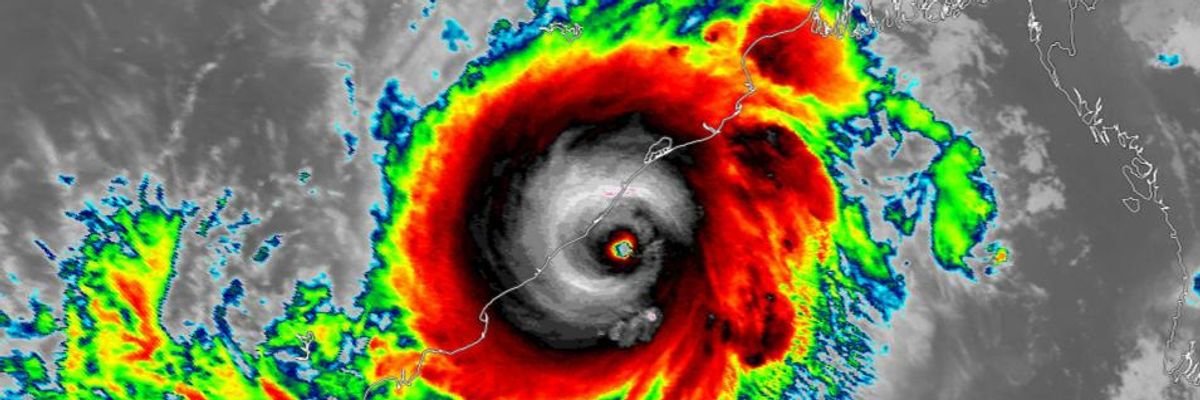A storm that meteorologist Eric Holthaus characterized as "one of the strongest" cyclones in India's recorded history made landfall on Friday amid warnings of "potentially catastrophic" wind, rain, and ocean surges.
Over a million people were reportedly forced to evacuate Thursday as Cyclone Fani--classified as the equivalent of a Category 4 hurricane--hurtled toward India. Tens of millions of people are in the path of the massive storm.
"Meteorologists are calling the storm a near-worst-case scenario for coastal zones, as it will push an enormous storm surge inland, inundating homes, roads, and businesses near sea level--not just in eastern India but potentially also north into Bangladesh," the Washington Postreported. "This low-lying stretch of coast along the Bay of Bengal is one of the most vulnerable to storm surge in the world."
Bishnupada Sethi, special relief commissioner for the Indian state of Odisha, told Al Jazeera that at least two people have died since the storm made landfall Friday.
Oxfam India, which is helping deliver emergency relief in response to Cyclone Fani, said the storm has already "wreaked havoc in the state of Odisha."
"Heavy rainfall and high-speed winds have destroyed livelihoods leaving families in urgent need of help," the group wrote. "They are in urgent need of safe drinking water, medical and hygiene supplies, food, and long-term recovery and rehabilitation support to cope with the disaster."
Bimal Pandia, an officer with Oxfam, toldThe Guardian Friday morning that the storm is "quite serious now; the wind is blowing at between 120 and 150km/hour."
Many trees have been uprooted outside our house," Pandia said, "but since we are not able to venture outside it's difficult to tell the damage."

